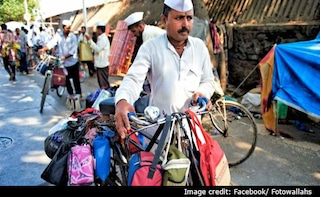Bhelpuri. Marine Drive. The Taj Mahal Palace Hotel. Bombay duck or bombil. Sanjay Gandhi National Park. Dabbawalas. What do all these have in common? They are all, to my mind, at least, iconic symbols of Mumbai. Mumbai would not be Mumbai without the crunch and sparkle of bhelpuri on Juhu beach; without the rain-lashed Marine Drive, slick with water on a monsoon day. Certainly, Mumbai wouldn't be Mumbai without its wave of dabbawalas, unleashed onto the city every morning, transporting their precious cargo from home to office and back.It's been perhaps a decade, or two, since Mumbai has woken up to the brilliance of the dabbawalas, but they've been around from 1890, a time when Mumbai did not enjoy the surge of cafes and restaurants it has today. Their charming website called Mumbai Dabbawala informs us that the first dabbawalas hailed from the Warkari sect of rural Maharashtra. Their first customers were Parsi women, and according to the site, "it all started...when a Parsi banker wanted to have home cooked food regularly in office and gave this responsibility to the first ever dabbawala."
Advertisement
Advertisement
Advertisement
Advertisement
For the latest food news, health tips and recipes, like us on Facebook or follow us on Twitter and YouTube.
Advertisement
